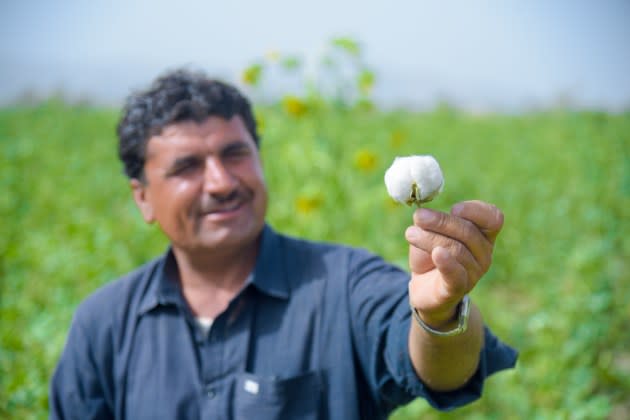Pakistan Looks to Benefit From Organic Cotton

Even after a resurgence in the cotton production estimates for Pakistan in 2023/24—roughly 67 percent higher than the flood-damaged 2022/23 crop according to the U.S. Department of Agriculture—there is a push for change.
In this vein, the shift toward going organic has been growing, following field work begun in 2022 with 1,200 farmers. Enter the Organic Cotton Accelerator (OCA).
More from Sourcing Journal
USTR Demands Investigation Into 'Export Competitiveness' of Asian Apparel Sourcing Markets
Organic Cotton Accelerator Launches 'Organic Cotton Training Curriculum for Pakistan'
The idea of organic cotton has promise with increased sustainability standards being adopted by European Union, as well as in the context of the enormous damages faced by cotton farmers in Pakistan over the previous year when floods damaged more than 60 percent of cotton production.
It also brings into play a series of cross collaborations both global and local.
Founding partners for OCA include Laudes Foundation, H&M, Kering, Eileen Fisher, Textile Exchange, Tchibo, Inditex, and C&A with the aim of using the collective investments as a catalyst for change.
Local players are optimistic about the program, and have commented on its value—including the need for training.
The Organic Cotton Training Curriculum plays a huge part in this.
Muhammad Saleem Akhter of the Mahmood group of Industries, observed: “The Organic Cotton Training Curriculum (OCTC) is the first national guiding document on organic cotton farming of Pakistan. It smartly explains the overall process and its outcomes. It is simple and fully equipped with modern tools of communication and training aids like role-play, group activities and brainstorming which not only train the audience but make the overall process fully participatory.”
The 12 training modules cover a gamut of important issues in the difficult transition from traditional cotton farming to organic—often a process that spans at least three years.
“We bring the resources like the curriculum, but also capacity building facilities to those implementation partners to try and streamline the methodologies we use,” Ruud Schute, program director, OCA told Sourcing Journal. “We reach out to the farmer communities at the beginning of the season, sometimes by supplying seed, mostly by supplying capacity and training and at the end of the season we aim to procure—we have an 85 percent procurement ration—and then we measure the premium that was paid to the farmers to make sure that they have level or better business case than conventional farmers in the same region, village, or district.”
Organic cotton is still far from making big inroads—less than 2 percent of global cotton production is organic—but Schute is optimistic.
“Nothing is perfect, it’s all about continuous improvement,” he observed. “Initially cotton systems were mostly asking for certificates. Now they are becoming very aware that its all about partnerships, climate, nature, diversity—it is about the farmer’s needs, guaranteeing procurement, fair compensation and about sensitizing those communities to what’s going on.”
The similar program in India has been a success by most counts, with 4.4 million euros ($4.77 million at the present exchange rate) given to farmers in 2022, according to OCA’s annual report.
“The reason to go to Pakistan was not to replicate what India does,” Schute explained, detailing the situation. Among the different geographical factors, “‘Pakistan also has a shorter staple fiber which is used in denim, toweling and home textiles—the qualities are somewhat different, and as textile exports have grown there has been a huge push to grow the organic cotton in the country.” he said.

